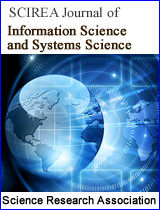Nature of Entropy
DOI: 10.54647/isss12094 75 Downloads 2905 Views
Author(s)
Abstract
One of the most intriguing laws in modern physics must be the Boltzmann’s entropy principle. As it stated, entropy within an isolated subspace increases with time, but it does not tell us why it has to be changing naturally with time. Since any evolution of our universe has a profound connection on her subspaces, from which we see that; there is a connection of entropy changes within an isolated (passive) subspace. Based on the big bang creation of our universe we see that; entropy within an isolated subspace increases naturally with time, since every subspace is a temporal (t > 0) subspace. In other words every subspace has a price tag; an amount of energy ∆E and a section of time ∆t to create. Yet without an amount of information ∆I it is impossible to created. Although entropy can be traded with information, but it is the amount (e.g., in bits) but not the actual information that most physicists assumed. I have also shown that Shannon type communication is for reliable information transmission and it is not purposely to make the transmitted signal more ambiguous as quantum entanglement communication has proposed.
Keywords
Entropy Theory; Information Theory: Temporal Subspace; Empty Space; Temporal Universe: Boltzmann’s Entropy; Shannon’s Information; Nature of Time.
Cite this paper
Francis T. S. Yu,
Nature of Entropy
, SCIREA Journal of Information Science and Systems Science.
Volume 5, Issue 5, October 2021 | PP. 68-79.
10.54647/isss12094
References
| [ 1 ] | F.T.S. Yu, “Time: The Enigma of Space”, Asian Journal of Physics, Vol. 26, No.3, 143-158, 2017. |
| [ 2 ] | F.T.S. Yu, “From Relativity to Discovery of Temporal (t > 0) Universe”, Origin of Temporal (t > 0) Universe: Correcting with Relativity, Entropy, |
| [ 3 ] | Ludwig Boltzmann, "Über die Mechanische Bedeutung des Zweiten Hauptsatzes der Wärmetheorie". Wiener Berichte. 53: 195–220, (1866). |
| [ 4 ] | C. E. Shannon and W. Weaver, The Mathematical Theory of Communication, University of Illinois Press, Urbana, IL, 1949.5. F. T. S. Yu, Optics and Information Theory, Wiley-Interscience, New York, 1976. Information Theory, Wiley |
| [ 5 ] | F. T. S. Yu, Optics and Information Theory, Wiley-Interscience, New York, 1976. Information Theory, Wiley |
| [ 6 ] | W. Heisenberg, “Über den anschaulichen Inhalt der quantentheoretischen Kinematik und Mechanik,” Zeitschrift Für Physik, vol. 43, no. 3–4, 172 (1927). |
| [ 7 ] | F. T. S. Yu, “Nature of Temporal (t > 0) Quantum Theory: I” Quantum Mechanics, Edited by P. Bracken, Chapter 8, p 139-160, IntechOpen, London (2020). |
| [ 8 ] | F. T. S. Yu, “Nature of Temporal (t > 0) Quantum Theory: II” Quantum Mechanics, Edited by P. Bracken, Chapter 9, p 161-188, IntechOpen, London (2020). |
| [ 9 ] | D. Gabor, “Communication Theory and Physics,” Phil. Mag, vol. 41, no. 7, 1161, 1950. |
| [ 10 ] | F. T. S. Yu, “Information Transmission with Quantum Limited Subspace”, Asian Journal of Physics, Vol. 27 , no 1, 1-12 (2018). |
| [ 11 ] | L. J. Cultrona, E. N. Leith, L. J. Porcello and W. E. Vivian, “On the application of Coherent Optical Processing Techniques to Synthetic-Aperture Radar,” Proc. IEEE, 54, 1026 (1966). |
| [ 12 ] | E. N. Leith and J. Upatniecks, “Reconstructed Wavefront and Communication Theory”, J. Opt. Soc. Am., 52 (1962)1123. |
| [ 13 ] | M. Bunge, Causality: the place of the causal principle in modern science. Harvard University |
| [ 14 ] | F.T.S. Yu, Introduction to Diffraction, Information Processing and Holography, Chapter 10, MIT Press, Cambridge, Mass., 91-98 (1973). |
| [ 15 ] | N. Wiener, Cybernetics, MIT Press, Cambridge, MA, 1948. |
| [ 16 ] | N. Wiener, Extrapolation, Interpolation, and Smoothing of Stationary Time Series, MIT Press, Cambridge, MA, 1949. |
| [ 17 ] | K. Życzkowski,, P. Horodecki, M. Horodecki, and R. Horodecki, ”Dynamics of quantum entanglement”. Phys. Rev. A 65, 1-10, 2001. |
| [ 18 ] | F. T. S. Yu, The Fate of Schrodinger’s Cat, Asian J. Phys., vol. 28, no 1, 63-70 (2019). |

